Traverse grows up to challenge Tahoe segment
Filed under: Weekly test drives, Autos
By John Gilbert
In the old days, Chevrolet took care of all the size requirements for SUVs by offering small (Blazer), medium (Tahoe) and large (Suburban). Of course, those intentions expanded to the 2020 model year, when Chevrolet stretches from the largest Suburban, to the Tahoe, then the midsize Traverse, down to the reimagined Blazer, the compact Equinox, the more-compact Trax, and the also-compact TrailBlazer.
There was a recent time when fuel economy restrictions caused a realistic elimination of the largest vehicles and a splurge of the compacts. But my memory was challenged recently, after I test-drove and reported on the new Chevrolet Equinox, which surprised me because it performed well and handled impressively in its latest form.
Most recently, I got a Traverse to test for a week, and when I first laid eyes on it, I was impressed by the shapely form that made it look modern and sporty, with a dash of luxury. When I climbed into the driver’s seat, I was impressed with the amount of room, and when I hit the ignition button and stepped on the gas, it took off with a bit of a jolt, and it showed tendencies for power whenever I touched the gas.
Always looking for the reasons a company builds a certain vehicle, I thought it was curious that the new midsize Traverse seemed to have grown into something larger than midsize. In fact, I thought the Traverse might have been a flashback for Chevy, to the days when it built vehicles that were always a little bigger than last year’s models, gradually luring us to buying bigger vehicles that were, yes, less fuel-efficient, while hauling larger groups of people.
Because of the difficulty I had estimating the dimensions whenever I tried to park the Traverse, and the way it seemed almost cumbersome whenever I tried to take a corner with a dose of performance, the Traverse’s size bothered me. The old rule still works, that if you need more room you have to sometimes build the vehicle bigger, but the Traverse seemed to have grown large enough to intrude on the Tahoe’s turf. Read more
New Mercedes GLB 250 fills curious niche
Filed under: Weekly test drives, Autos
By John Gilbert
Deciding what vehicle to buy at a Mercedes-Benz dealership is a lot like making a menu selection at “Alice’s Restaurant” — Arlo Guthrie’s iconic song. The great line from the chorus — “You can get anything you want, at Alice’s Restaurant” — can be duplicated when looking over the delectable selections from Mercedes, which includes assorted tasty cars and SUVs.
The SUV world is running red-hot these days, and something like half of all SUVs fall into the compact or small segment. That had to make it tough for Mercedes, that proud company from Stuttgart, Germany, that invented the first automobile back before the 20th Century, and remains greatly responsible for what has become the crazy automotive world. After establishing its plateau for luxury and class, it was one thing to branch into the large SUV market, but quite different to build a compact utility vehicle.
But Mercedes has made the leap, and the 2020 GLB 250 is a remarkable example of what a company — a great company, at that — can do to command a slot in a segment that has to be out of its comfort zone.
Mercedes, of course, in its uncompromising way, creates an internal battle for supremacy with the GLB. There might be a question of how inexpensive can Mercedes make an SUV, or how expensive it dares make it. Same with its size, can a compact SUV house three rows of seats with the accommodations Mercedes is known for? Read more
Infiniti QX80 shoots for top in size, features
Filed under: Weekly test drives, Autos
By John Gilbert
With travel severely limited during the Covid-19 pandemic, there still are some gems available. One popped up while road-testing the 2020 Infiniti QX80 — yes, the big one — for a week in Duluth, Minnesota. Word made the national news that Vikre Distillery in Duluth had changed over its operation to make hand sanitizer, and it was giving away the stuff free as a public service gesture to anyone who stopped by with a modest sized vessel at their shop, located in the shadow of the famous Aerial Bridge.
My wife, Joan, is more of a neat and tidy type than I am. She’s one of those who, on the rare occasion when I attempt cleaning something thoroughly, she will immediately complain how grungy it is. So she was enthused to accompany me downtown, driving through what seemed like a ghost-town via all the vacant roadways. She does share my feelings about SUVs and trucks that are too big — far too large for the person, couple, or small family that universally seems to be driving them, and as we drove, I pondered how big the QX80 really was.
It steers and handles well enough, for a large vehicle, and those 22-inch Bridgestone tires on stylish alloy wheels could probably crush a compact car if one got in its path. The big V8 and the enormity of the QX80 were well-matched, but I couldn’t help thinking of the various smaller Infiniti SUVs that are among my favorites in the whole industry. Compared to those, the QX80 seems too tall, too hefty, too big, and like a huge block to house all it has.
I parked and walked around the rear of the QX80 with my 16-ounce jug in hand, past a couple of men talking to each other on the sidewalk. Being a non-drinker, it was my first time inside the Vikre shop, and I was greeted by a friendly staff person who filled my jug out of the spigot and sent me off, out of the one-customer-at-a-time restriction.
I walked back up the sidewalk, past the two fellows still talking there, and one of them said: “Hey, great-looking vehicle you’ve got there. Very impressive!”
“Thanks,” I said, explaining that I was just test-driving it, before I climbed in the driver’s door. Read more
XT5 spells crossover highlight for Cadillac
Filed under: Weekly test drives, Autos
John Gilbert
Maybe Cadillac is planning to give us all a quiz. Line up all the luxury car buyers and see if they can identify and distinguish among an ATS, a CTS, an XT4, an XT6, a CT6, an XTS, the XRS, and an XT5.
Then ask us all which ones are cars, which are SUVs, and which are a combination, sort of combining the station wagon of the old days, the crossover SUVs so popular today, and the luxury sedan that we used to know and love. So long, Coupe deVille!
The XT5, which I recently road-tested for a Coronavirus Pandemic week of social distancing around Duluth, Minnesota, and which is this week’s subject, caught me my surprise. I’ve driven several Cadillac models, as General Motors’ elite brand tries to pull itself up to compete with the best luxury vehicles from Germany, Japan, the UK, and even Korea.
As an aside, I am a purist for type-face fonts, wherever they appear and whatever they are supposed to identify. For example, I absolutely hate the futuristic font on the Minnesota Vikings uniform numbers, with serifs jutting up, looming down, or melting off the edges, everywhere. I want to be able to distinguish the numbers at a glance, and uniform numbers should be as simple and straightforward as possible — maybe make them italic, if you want to get daring. The numeral 5, for example, should have the top horizontal bar end, just end, as it ventures to the right. If you put a serif on the tip of it, now that bold bar turns downward, and at a glance you have no idea whether it’s an S or a 5.
With that in my brain, when I saw I was going to get an “XT5” for a test, I was certain it was a mistake of tiny print and I was going to be an XTS — which I’ve driven, but is always pleasant to drive.
This time, howerver, Cadillac can celebrate scoring an “Aha moment” on me when the vehicle showed up as a quite sleek, station-wagon-wannabe, with nice lines and the dramatic grille Cadillac has featured recently. When I pulled out the equipment sticker, it said “2020 XT5 Sport AWD.”
No serifs, so the 5 is a 5 is a 5, as it were. I had driven an XT4, which is similar and powered by a 2.0-liter turbo 4-cylinder. And I’d driven an XT6, which came with a 4, a V6, a V8, and turbo versions of most.
So I had to do a little research on the XT5 Sport. And then I figured the heck with it — let’s drive! Read more
Diesel pushes Wrangler above mere icon
Filed under: Weekly test drives, Autos
By John Gilbert
It used to be that the arrival of a Jeep Wrangler to the Western tip of Lake Superior for a test drive promised equal parts adventure and nuisance. But the 2020 Jeep Wrangler Unlimited Sahara 4X4 has altered that dual description. It’s still adventurous, but the nuisance factor has been pretty well left in the dust and rubble by technology and refinement.
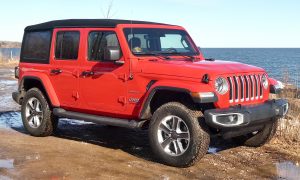
The test vehicle arrived in Firecracker Red paint that was so red that it was almost red-orange, bright enough to cause passers-by to take another look and to offer the occasional thumbs-up.
When automakers return to full production if and when this Coronavirus shutdown ends, it might be the perfect time to take a look into the expanding FCA line — which stands for Fiat Chrysler Automobiles, but also includes Jeep.
Especially Jeep.
The hearty all-American utility family was perhaps the prime jewel in the deal, when Fiat bought out Chrysler and all its appendages, and with Fiat’s enthusiasm behind it, Jeep has risen steadily in an industry climate that has been notably stagnant. As time has evolved, I found myself appreciating the Grand Cherokee and everything on down to the Renegade, always cautioning myself to not overlook the Wrangler — that rugged, war-born all-out utility vehicle that you can find climbing ridiculous obstacles wherever ridiculous obstacles can be found to drive over.
Then, a couple years ago, the Fiat-pushed refinement hit the Wrangler, adding various options to the suspension and drivetrain, coupled with some outstanding interior upgrades that have pretty much ruined Wrangler’s life-long reputation of being rugged and tough in all circumstances, even if it means being a little harsh to the uninitiated. That disclaimer is no longer needed, because the refinement has turned the rugged off-roader into an on-roader that is actually pleasant to drive, even on long trips.
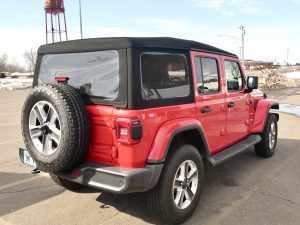
The biggest news about the new Wrangler is…well, it’s several things. First, the diesel engine is a 3.0-liter V6 turbodiesel, which FCA calls “EcoDiesel.” It is built in Italy, and the 8-speed automatic transmission handling the versatile 4-wheel-drive beast is made in Germany by ZF. The Wrangler itself is assembled in Toledo, Ohio. Talk about a citizen of the world.
The turbodiesel is not huge, at 3.0-liters, but it turns out huge power. It has 260 horsepower and a whopping 442 foot-pounds of torque. That allows the Wrangler to tow up to 3,500 pounds, which is a large haul for a tightly made 4-door Wrangler that still appears to be made to challenge rocks and hillsides off-road, where you wouldn’t be towing any trailers.
Beyond the powertrain, which shows EPA fuel estimates of 22 city and 29 miles per gallon highway, the diesel is quiet and hurls you off the line with quick power. The 8-speed shifted smoothly. The Wrangler now offers buyers a very difficult decision, coming with a tried and true 3.6-liter V6, or the outstanding new 2.0-liter turbo 4, or the turbo-diesel. Those fans who have had diesels know of their strength and durability, and won’t flinch at the option tag of $4,000 to add this Fiat-sourced 3-liter V6 turbodiesel, which is as quiet as the 3.6 gas V6 and about doubles the torque.
The suspension is heavy duty, with gas shocks, and the Command-Track part-time 4-wheel-drive system worked efficiently and without flinching. The part-time thing means you can shift it into 4×4 or 4-wheel-drive high, or 2-wheel-drive. In Minnesota, you’re still in 2WD most of the time if the highways are free of ice, but there aren’t many things more conducive to a secure feeling than to be in a Jeep with the system in 4WD, and the Dana front axle means it will also work over rough terrain, while hill-descent control will ease you down even the mile-high hills of Duluth, Minnesota.
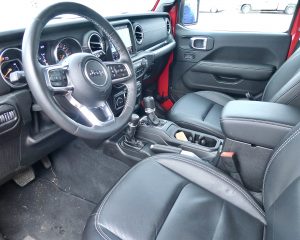
The interior’s straightforward and efficient instruments, its shift levers on the console, a navigation screen in easy view atop the center stack all are without criticism, but what sets the new Wrangler Sahara’s interior apart is the remarkably classy soft-leather front bucket seats, heated for the harshest weather and embossed with a Sahara logo.
With all the connectivity and satellite audio and remote-start capability, you look around and feel as though you’re in a typical 4-door SUV. It’s almost easy to forget that the roof you’re looking at is heavy-duty fabric, and you also can fasten a 3-piece fiberglass roof firmly in place, simply by sliding it out of its easily-stowed case. The fabric top was fine in some very chilly weather, and it left behind the recollection of flapping fabric tops on Jeeps from the old days.

That is another old Jeep “tradition” that won’t be missed. Add in backup camera, and the safety security cross-traffic controls, and keyless entry and remote start puts this Jeep into its own realm.
But the most important thing is the overall package, which, when you combine all the high-tech features with the plush leather seats, make the Unlimited Sahara a vehicle that demands a comparison drive, even amid all those other Jeep models joining it in the showroom. Its base price of $38,645 quickly jumps to $55,925, diesel and all, but the lost tradition that will be missed the least is that after handling all sorts of rugged off-roading or even Duluth streets, it rides smoothly on the highways. No more 200-miles-on-a-pogo-stick treks for Wrangler lovers.
KEEP WATCH WITH SANDS
A month ago, I began a brief introductory if offbeat “test drive” that is certain to keep me on time. I have been selected to a trial run of a new Szanto ICON Roland Sands signature series wristwatch. This prize timepiece is designed to have the sporty flair of a motorcycle racer, which Sands was, in motocross and road racing, before he turned to designing motorcycles and accessories.
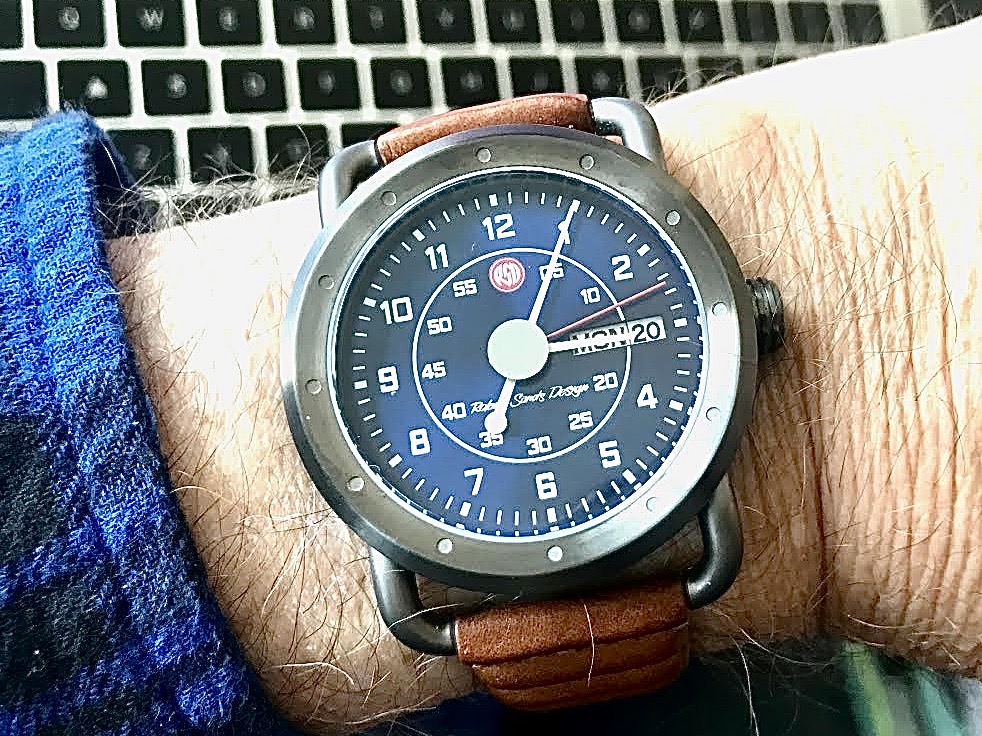
I’ve spent most of my career covering motorsports, with motorcycle road-racing among the highlights, everywhere from World Superbikes from Brainerd in Minnesota to Hockenheim in Germany on a very rainy weekend in 1989. So who better to evaluate a wristwatch designed by a bike racer?

Among his prizes are leather motorcycle jackets, which are hinted at in the leather ribbed bands of his watches. He helped with the actual design of the watch, itself, otherwise designed by Time Concepts, LLC., which has built outstanding Swiss watches. lt has a mineral crystal with 100-meter water resistance, a satin brushed stainless steel screw-on back, and a design that looks like the sort of watch a rider or racer might wear, both in the handlebar-like attachment bars and the watch face itself. It comes in assorted face colors and bands, starting at $225, and can be seen online at time concepts.net.


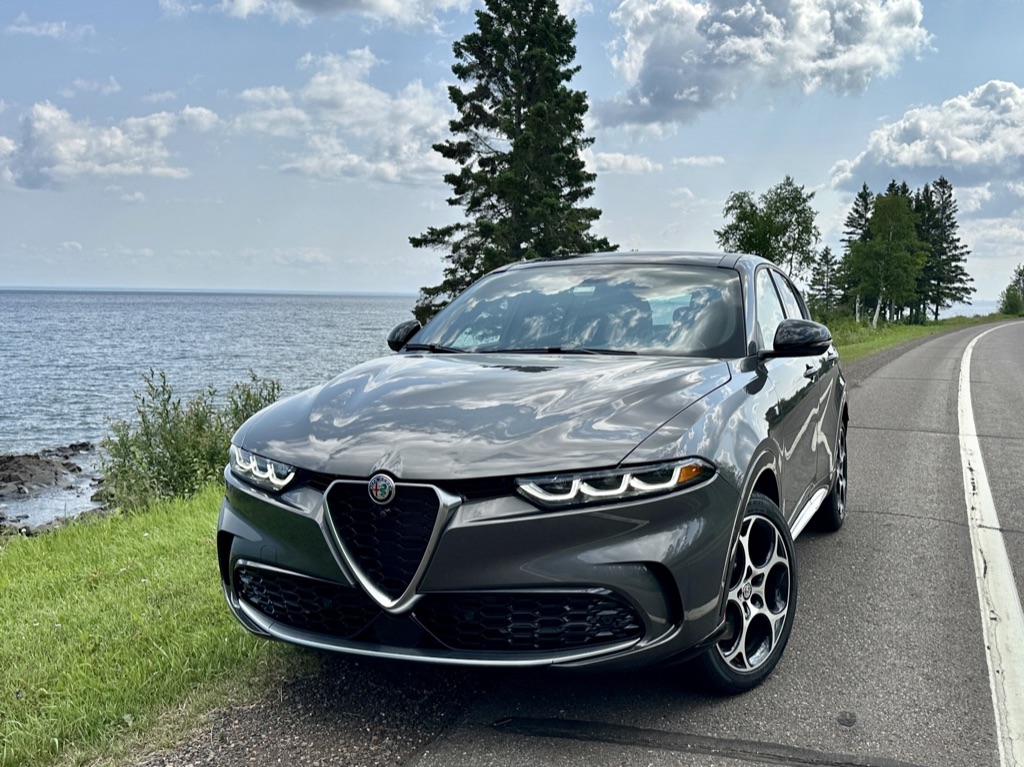


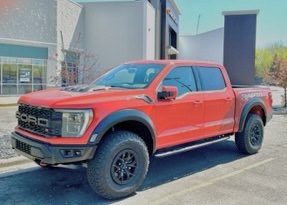

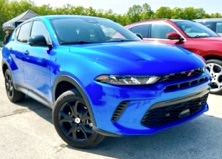


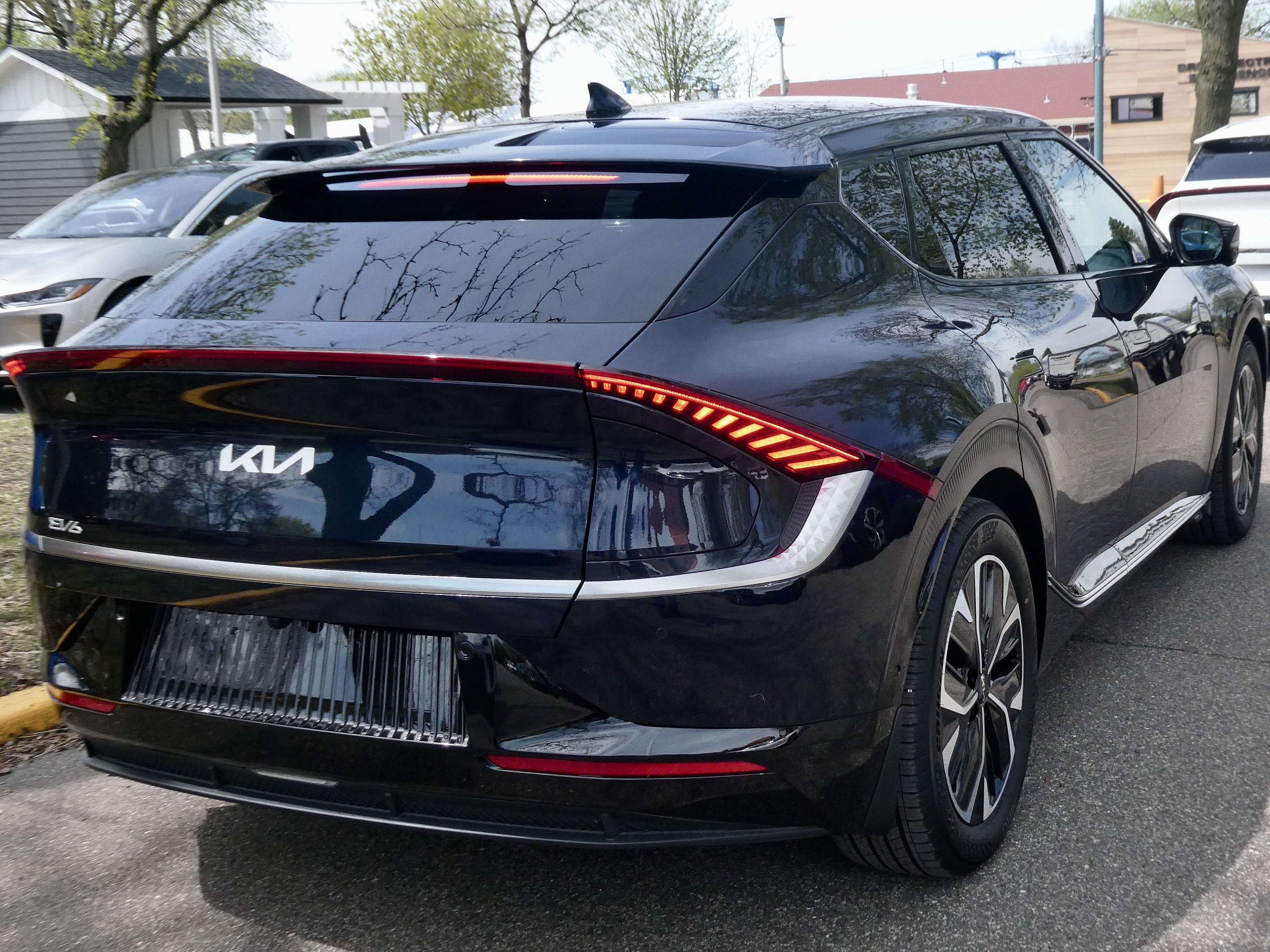
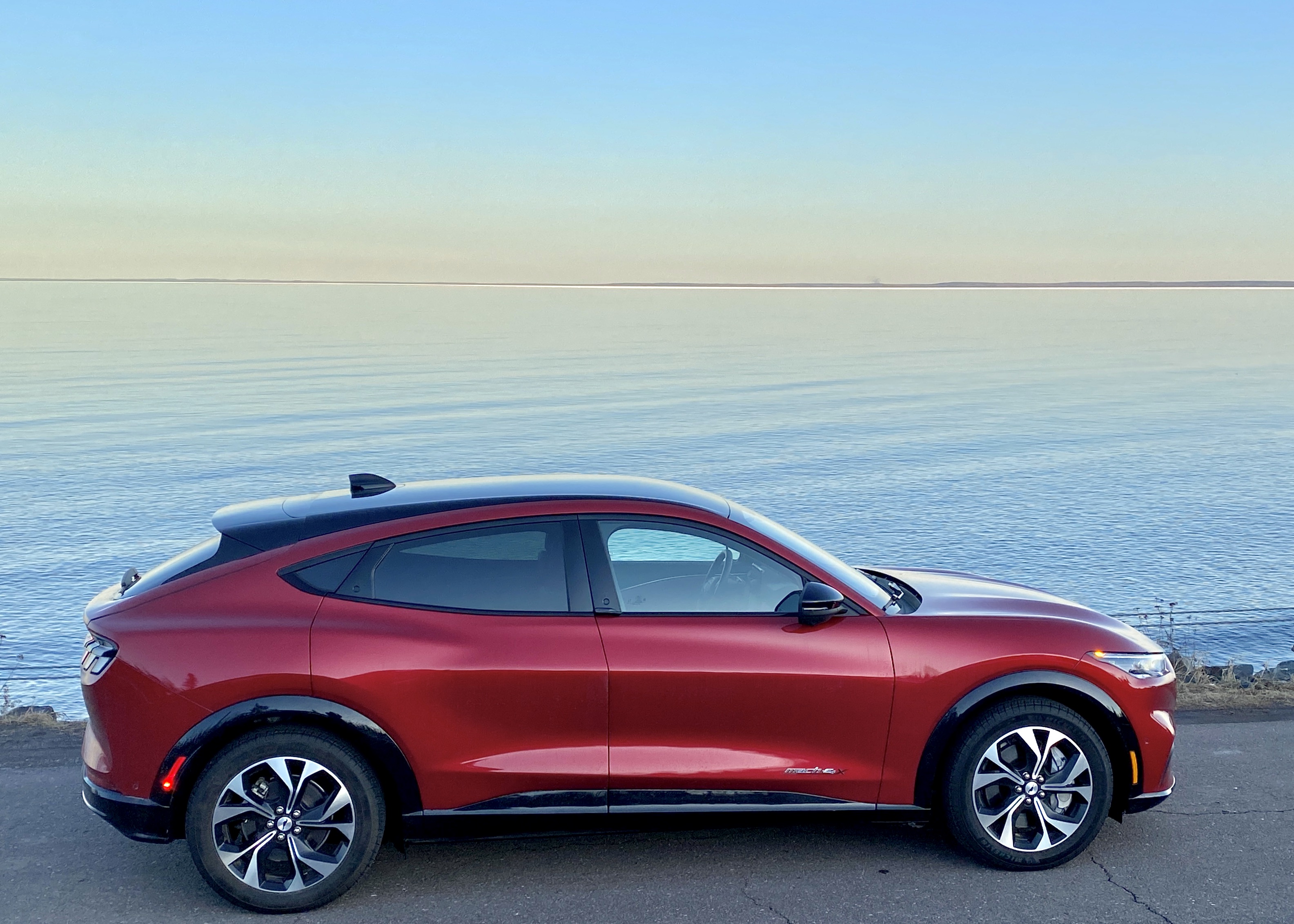
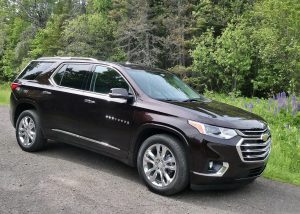
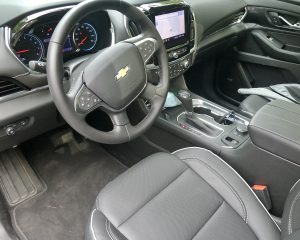
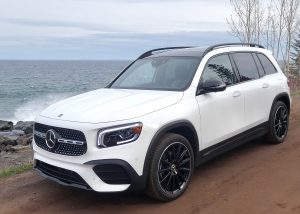
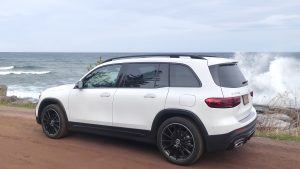
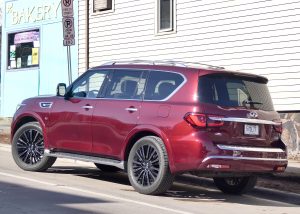
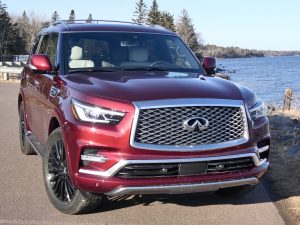
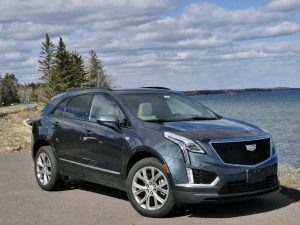
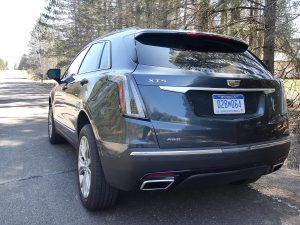
 John Gilbert is a lifetime Minnesotan and career journalist, specializing in cars and sports during and since spending 30 years at the Minneapolis Tribune, now the Star Tribune. More recently, he has continued translating the high-tech world of autos and sharing his passionate insights as a freelance writer/photographer/broadcaster. A member of the prestigious North American Car and Truck of the Year jury since 1993. John can be heard Monday-Friday from 9-11am on 610 KDAL(www.kdal610.com) on the "John Gilbert Show," and writes a column in the Duluth Reader.
John Gilbert is a lifetime Minnesotan and career journalist, specializing in cars and sports during and since spending 30 years at the Minneapolis Tribune, now the Star Tribune. More recently, he has continued translating the high-tech world of autos and sharing his passionate insights as a freelance writer/photographer/broadcaster. A member of the prestigious North American Car and Truck of the Year jury since 1993. John can be heard Monday-Friday from 9-11am on 610 KDAL(www.kdal610.com) on the "John Gilbert Show," and writes a column in the Duluth Reader.